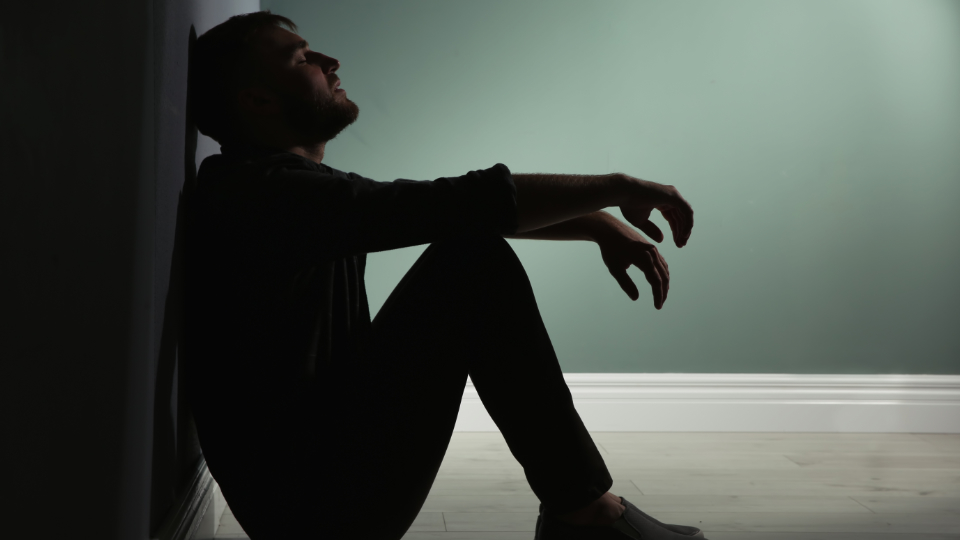This lawsuit is in our Title IX Lawsuits Database.
A new lawsuit – one of many against Syracuse University – was filed on June 15th in the U.S. District Court for the Northern District of New York. John Doe is represented by Nesenoff & Miltenberg, a firm that has been pioneering Title IX litigation for the better part of a decade. Syracuse has been sued by accused students at least eleven times in the last five years, and eight of those lawsuits have resulted in a favorable outcome for the plaintiff. In this lawsuit, Doe claims Syracuse violated its own procedures and exhibited gender bias in its investigation, which ultimately led to his expulsion.
As is common in these cases, it involves the accusation that Doe’s accuser, Jane Roe, was incapacitation due to alcohol at a frat party. Some things stand out, however. Problematically, there were numerous witnesses who were able to speak to the accuser’s degree of inebriation. The complaint notes that, during the investigation,
…the Hearing Officer incredibly discredited the testimony of the four impartial students that were in the room with Plaintiff and Roe immediately prior to the sexual encounter, where each student unequivocally stated that Roe did not appear intoxicated, by finding that the students came into the room for their own reasons and did not appear to have an interest in observing Roe’s behavior.
Additionally:
A considerable number of Roe’s witnesses provided unsupported testimony that was even disproven by video surveillance footage from the party. For example, Roe’s friend, E.D., testified that when she saw Roe at the party, Roe was alone, extremely intoxicated, and that when E.D. greeted Roe, Roe simply stared at E.D. and walked away. Video footage showed, however, that when E.D. interacted with Roe, Roe was not alone but rather was with Plaintiff Doe. Moreover, Roe and E.D. mutually greeted and embraced each other at the party
Further:
Worse, while seeking to limit the accounts of the four students that were physically present in the room with Plaintiff and Roe, the Decision Letter highlighted the unlikely and inaccurately stated accounts of E.D. and J.Y., two witnesses that did not testify at the hearing.
Of course, because they did not testify at the hearing, their statements were not subject to live cross-examination.
The Decision Letter additionally focused on Roe’s reported behavior before arriving at the DKE house and at least one hour after the sexual encounter. The Decision Letter provided no indication that Roe was unable to consent at the time of the sexual encounter and moreover, that Plaintiff knew or should have known that Roe was unable to consent at the time of the sexual encounter, as required by the University’s policies.
Why would Syracuse give greater weight to evidence that occurred further from the time of the actual encounter and give virtually no weight to the testimony of four witnesses who provided testimony immediately prior to the encounter? Why do so many of Roe’s witnesses lack credibility?
The complaint also describes how, while smearing his name all across campus, Roe called the police on Doe for violating a mutual no-contact order because Doe told his side of the story in a *private* Snapchat message while redacting her name. Police found he did not violate the order, but the message is clear: speak up to assert your innocence – even privately and redacting the accuser’s name – and your accuser will summon armed police to intimidate you.
There are some other interesting elements to this lawsuit. Roe was Doe’s “potential mentor,” which gave a pseudo-claim of authority over Doe. The complaint notes this here:
After receiving the Notice of Investigation, Plaintiff Doe informed his mother of the investigation. Plaintiff Doe detailed the encounter, including that Roe was his potential mentor, Doe did not flirt with Roe, and that Roe later came onto him sexually in a private setting. After speaking with his mother, Plaintiff recognized that Roe had sexually assaulted him, and used her platform as a mentor to pressure him into a sexual relationship when Plaintiff was only seeking out a professional relationship.
Kudos to Doe for immediately telling one of his parents. Too often, students wait until late in the process. Doe then sought a sexual assault claim against Roe, but this apparently went nowhere.
Syracuse’s decision is further complicated by Roe taking a picture of herself via Snapchat at or around the moment she performed oral sex on Doe and sending the picture to a high school friend – something she was coherent enough to do. This same high school friend (“J.Y.”), “saw Roe just minutes before Roe went upstairs with Plaintiff and did not express concerns about Roe’s level of intoxication.” After sending the message to J.Y., Roe then initiated intercourse – which she initiated by straddling Doe. She was menstruating and removed her tampon herself, lending credibility to the notion that she was coherent.
Roe then claimed the next day that she didn’t remember the events of the previous night, she was uncomfortable, and that she “wanted space.” She then later claimed Doe violently attacked and raped her.
The causes of action here are Title IX (erroneous outcome and selective enforcement), breach of contract, and violation of New York State Human Rights Law §296(4) regarding sex discrimination.
There is much more to this story than what I have presented here. I invite you to read more in the complaint. Also, of course, feel free to see more lawsuits in our Title IX Lawsuits Database.
Thank You for Reading
If you like what you have read, feel free to sign up for our newsletter here:
About the Author
Related Posts
This lawsuit is in our Title IX Lawsuits Database.
A new lawsuit – one of many against Syracuse University – was filed on June 15th in the U.S. District Court for the Northern District of New York. John Doe is represented by Nesenoff & Miltenberg, a firm that has been pioneering Title IX litigation for the better part of a decade. Syracuse has been sued by accused students at least eleven times in the last five years, and eight of those lawsuits have resulted in a favorable outcome for the plaintiff. In this lawsuit, Doe claims Syracuse violated its own procedures and exhibited gender bias in its investigation, which ultimately led to his expulsion.
As is common in these cases, it involves the accusation that Doe’s accuser, Jane Roe, was incapacitation due to alcohol at a frat party. Some things stand out, however. Problematically, there were numerous witnesses who were able to speak to the accuser’s degree of inebriation. The complaint notes that, during the investigation,
…the Hearing Officer incredibly discredited the testimony of the four impartial students that were in the room with Plaintiff and Roe immediately prior to the sexual encounter, where each student unequivocally stated that Roe did not appear intoxicated, by finding that the students came into the room for their own reasons and did not appear to have an interest in observing Roe’s behavior.
Additionally:
A considerable number of Roe’s witnesses provided unsupported testimony that was even disproven by video surveillance footage from the party. For example, Roe’s friend, E.D., testified that when she saw Roe at the party, Roe was alone, extremely intoxicated, and that when E.D. greeted Roe, Roe simply stared at E.D. and walked away. Video footage showed, however, that when E.D. interacted with Roe, Roe was not alone but rather was with Plaintiff Doe. Moreover, Roe and E.D. mutually greeted and embraced each other at the party
Further:
Worse, while seeking to limit the accounts of the four students that were physically present in the room with Plaintiff and Roe, the Decision Letter highlighted the unlikely and inaccurately stated accounts of E.D. and J.Y., two witnesses that did not testify at the hearing.
Of course, because they did not testify at the hearing, their statements were not subject to live cross-examination.
The Decision Letter additionally focused on Roe’s reported behavior before arriving at the DKE house and at least one hour after the sexual encounter. The Decision Letter provided no indication that Roe was unable to consent at the time of the sexual encounter and moreover, that Plaintiff knew or should have known that Roe was unable to consent at the time of the sexual encounter, as required by the University’s policies.
Why would Syracuse give greater weight to evidence that occurred further from the time of the actual encounter and give virtually no weight to the testimony of four witnesses who provided testimony immediately prior to the encounter? Why do so many of Roe’s witnesses lack credibility?
The complaint also describes how, while smearing his name all across campus, Roe called the police on Doe for violating a mutual no-contact order because Doe told his side of the story in a *private* Snapchat message while redacting her name. Police found he did not violate the order, but the message is clear: speak up to assert your innocence – even privately and redacting the accuser’s name – and your accuser will summon armed police to intimidate you.
There are some other interesting elements to this lawsuit. Roe was Doe’s “potential mentor,” which gave a pseudo-claim of authority over Doe. The complaint notes this here:
After receiving the Notice of Investigation, Plaintiff Doe informed his mother of the investigation. Plaintiff Doe detailed the encounter, including that Roe was his potential mentor, Doe did not flirt with Roe, and that Roe later came onto him sexually in a private setting. After speaking with his mother, Plaintiff recognized that Roe had sexually assaulted him, and used her platform as a mentor to pressure him into a sexual relationship when Plaintiff was only seeking out a professional relationship.
Kudos to Doe for immediately telling one of his parents. Too often, students wait until late in the process. Doe then sought a sexual assault claim against Roe, but this apparently went nowhere.
Syracuse’s decision is further complicated by Roe taking a picture of herself via Snapchat at or around the moment she performed oral sex on Doe and sending the picture to a high school friend – something she was coherent enough to do. This same high school friend (“J.Y.”), “saw Roe just minutes before Roe went upstairs with Plaintiff and did not express concerns about Roe’s level of intoxication.” After sending the message to J.Y., Roe then initiated intercourse – which she initiated by straddling Doe. She was menstruating and removed her tampon herself, lending credibility to the notion that she was coherent.
Roe then claimed the next day that she didn’t remember the events of the previous night, she was uncomfortable, and that she “wanted space.” She then later claimed Doe violently attacked and raped her.
The causes of action here are Title IX (erroneous outcome and selective enforcement), breach of contract, and violation of New York State Human Rights Law §296(4) regarding sex discrimination.
There is much more to this story than what I have presented here. I invite you to read more in the complaint. Also, of course, feel free to see more lawsuits in our Title IX Lawsuits Database.
Thank You for Reading
If you like what you have read, feel free to sign up for our newsletter here:
About the Author
Related Posts
More from Title IX for All
Accused Students Database
Research due process and similar lawsuits by students accused of Title IX violations (sexual assault, harassment, dating violence, stalking, etc.) in higher education.
OCR Resolutions Database
Research resolved Title IX investigations of K-12 and postsecondary institutions by the Department of Education’s Office for Civil Rights (OCR).
Attorneys Directory
A basic directory for looking up Title IX attorneys, most of whom have represented parties in litigation by accused students.






